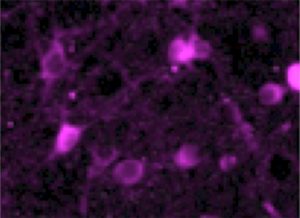“Modifying the Current Flow from Negative to Positive (Data!)”
Scientists are experts at asking questions, analyzing, and critiquing. We are also taught that while there are rules and facts in biology, exceptions to rules exist – in fact, we expect them. I’m going to talk about critiquing to the point of publishing, about negative (but important!) data, and how science as a whole would benefit from learning from others’ troubleshooting.
One of the greatest accomplishments of modern science is that one does not have to “reinvent the wheel.” If you are trying to detect some biological phenomena, chances are there is a kit made by a company that claims to do exactly what you are trying to do for x amount of dollars. While many kits are truly spectacular and save us time, energy, and tears trying to reinvent the wheel, there are some that are not so spectacular. Or they are, but they don’t do precisely what you’d expect them to because BIOLOGY – there is always an exception to the rule.
Our lab got excited about a kit that uses fluorescent dyes to simultaneously detect hypoxia and reactive oxygen species in live cells. WICKED! I already love imaging and making neurons fluoresce pretty colors, so this would be an added bonus for my project to show that a particular protein is sensitive to hypoxic stress versus oxidative stress. Using the kit was simple. Add red hypoxia dye, add green ROS dye, and image immediately after stressing out my neuronal cultures.
The kit worked! Except…

So these are unstressed neurons. See their happy dendrites extending everywhere? They’ve got great cell bodies too. Happy neurons are happy… except they’re all RED. The fluorescent dye is labeling my non-hypoxic cells as hypoxic, in addition to actual hypoxic cells (who are not as happy).

Why are non-hypoxic cells labeled as hypoxic? Without digressing far into chemistry, the red fluorophore is activated by a diverse class of enzymes that are abundant in every cell – nitroreductases. Some of these enzymes are dependent on oxygen levels to function, while some are oxygen-independent. The red dye is supposed to only fluoresce when in contact with oxygen-dependent nitroreductases – in which we infer detection of hypoxia. However, it is not always wise to make conclusions based on inferences. In this case, what the dye is actually and only measuring is nitroreductase enzyme activity, which are known to be affected by both endogenous and exogenous factors (i.e. not just oxygen!).
After struggling with different parameters to make this kit work for us, we decided to publish negative data (*GASP!*) comparing this kit’s detection of hypoxia to the current standards of measuring hypoxia. Gathering this data only took about six months of work, but about two years to publish because many journals – even methods journals – remain hesitant to publish negative data or data based on non-novel concepts. Eventually, we were able to publish this work, but it took much longer than expected. In that timeframe many other labs could have purchased the same kit and obtained false-positive results.
Publishing negative data and data that fail to replicate previous findings are as important as novel data in that they save you time and keep you from going down rabbit-holes. It’s so important that PLOS ONE recently launched “The Missing Pieces” collection that publishes such valuable negative findings. BioMed Central also provides such a platform in Journal of Negative Results in BioMedicine, stating that “publishing well documented failures may reveal fundamental flaws and obstacles in commonly used methods, drugs or reagents such as antibodies or cell lines, ultimately leading to improvements in experimental designs and clinical decisions.”
Another bonus of publishing this paper is that we got to publish a pun. As you can tell from this blog title, I LOVE puns.
Hehe, get it? The current dogma, as in electrical currents? Going from negative to pos- okay I’ll stop.






0 Comments